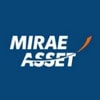Comparison of Axis Flexi Cap Fund Direct Growth vs ICICI Prudential Flexicap Fund Direct Growth
Pros | Beats FD returns for both 3Y & 5Y. | Consistently beats benchmark. Lower volatility within category. Protects capital during bear phase. | ||
Cons | 5Y returns in the bottom 25% of the category. 3Y returns in the bottom 25% of the category. | - |
INDMoney rank | 14/20 | 3/20 | ||
Category,Subcateogry | Equity,Flexi Cap | Equity,Flexi Cap | ||
Fund Age | 7 Years | 3 Years | ||
Fund Size | 12125 Cr | 16176 Cr | ||
Min Investment | SIP ₹100 Lumpsum ₹100 | SIP ₹100 Lumpsum ₹5000 | ||
Expense Ratio | 0.72% | 0.8% | ||
Exit Load | 1% | 1% | ||
Benchmark Index | S&P BSE 500 India TR INR | S&P BSE 500 India TR INR |
No of Holdings | 60 | 69 | ||
Top 5 Holdings | ICICI Bank Ltd (8.59%) HDFC Bank Ltd (6.55%) Bajaj Finance Ltd (4.63%) Infosys Ltd (4.39%) Bharti Airtel Ltd (4.18%) | TVS Motor Co Ltd (10.34%) Maruti Suzuki India Ltd (8.94%) ICICI Bank Ltd (7.52%) Avenue Supermarts Ltd (5.5%) HDFC Bank Ltd (4.4%) | ||
No of Sectors | 10 | 9 | ||
Top 3 Sectors | Financial Services (27.95%) Consumer Cyclical (18.07%) Industrial (14.82%) | Consumer Cyclical (42.4%) Financial Services (19.19%) Industrial (10.86%) | ||
Equity % | 93.96% | 99.04% | ||
Debt % | - | - | ||
P/E | 29.97 | 31.75 | ||
P/B | 5.58 | 5.37 | ||
Credit Quality | - | - | ||
Modified Duration | - | - | ||
YTM | - | - |
1-Month Return | -8.46% | -10.54% | ||
3-Month Return | -14.22% | -14.45% | ||
6-Month Return | -13.72% | -16.21% | ||
1-Year Return | 4.63% | 0.6% | ||
3-Year Return | 10.47% | 18.11% | ||
5-Year Return | 13.98% | - |
Sharpe | 0.22 | 0.77 | ||
Alpha | -3.29 | 4.41 | ||
Beta | 0.95 | 0.86 | ||
Standard Deviation | 14.6 | 13.22 | ||
Information Ratio | -0.84 | 0.87 |
Description | Axis Flexi Cap Fund Direct Growth is an equity fund.The fund could potentially beat inflation in the long-run. | ICICI Prudential Flexicap Fund Direct Growth is an equity fund.The fund could potentially beat inflation in the long-run. | ||
Managers | Sachin Relekar | Rajat Chandak |
- Compare
 Axis ELSS Tax Saver Fund Direct Plan Growth OptionVs
Axis ELSS Tax Saver Fund Direct Plan Growth OptionVs SBI Bluechip Fund Direct Growth
SBI Bluechip Fund Direct Growth
- Compare
 ICICI Prudential Bluechip Fund Direct Plan GrowthVs
ICICI Prudential Bluechip Fund Direct Plan GrowthVs HDFC Large Cap Fund -Direct Plan - Growth Option
HDFC Large Cap Fund -Direct Plan - Growth Option
- Compare
 Mirae Asset Large & Midcap Fund Direct Plan GrowthVs
Mirae Asset Large & Midcap Fund Direct Plan GrowthVs Mirae Asset Large Cap Fund Direct Plan Growth
Mirae Asset Large Cap Fund Direct Plan Growth
- Compare
 SBI Small Cap Fund Direct Plan GrowthVs
SBI Small Cap Fund Direct Plan GrowthVs Nippon India Small Cap Fund - Direct Plan - Growth Plan
Nippon India Small Cap Fund - Direct Plan - Growth Plan

